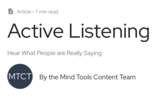
This article provides suggestions for how to improve your active listening skills -- and that you could use with your students.
- Subject:
- Professional Learning
- Material Type:
- Reading
- Author:
- MindTools
- Date Added:
- 06/08/2023

This article provides suggestions for how to improve your active listening skills -- and that you could use with your students.
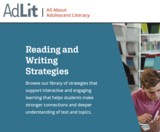
This website is a compilation of fantastic resources for any reading teacher. This page on the website provides a brief overview of before, during, and after reading strategies, as well as links with detailed information about a variety of strategies and downloadable resources for the classroom. They also provide recommended additional reading for interested viewers.
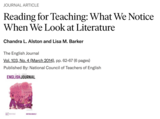
This article explains how teachers can read texts through the lens of preparing to teach the text and provides a model for reading as a teacher.
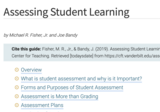
From Vanderbilt’s Center for Teaching, this web site offers an overview of key terms and principles about assessment and its role in teaching and learning. It includes discussion of different methods and how to make plans for assessment.
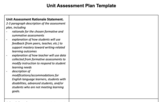
You may download and complete this template to fulfill the requirements for Evidence of Preparation and Planning.
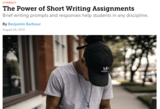
As teachers need to consider long and short writing, formal and informal, in a variety of genres, this article focuses on and gives examples of short writing tasks that can still help students explore learning and write effectively.
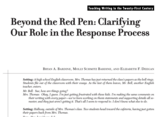
In this English Journal article, Bardine et al. apply research on teacher commenting practices (e.g., appearance comments vs. function comments) to the experiences of student writers in the secondary English classroom. They offer suggestions about how to use comments and response to writing more effectively to support student learning in the classroom.

This website provides class discussion strategies grouped by higher-prep, low-prep, and ongoing strategies.

This website includes text, images, and video instruction in the principles of backwards design. The material provides an overview of these principles as well as different stages to help teachers work through in their plans and templates they can use.
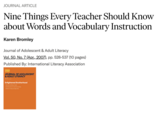
This article provides nine research-based elements of vocabulary instruction that can guide teachers thinking about the way they approach word study in their curriculum.
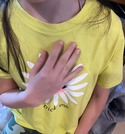
This lesson was designed for elementary school aged Special Needs students who often communicate using maladaptive behavior. Communicating our wants and needs can be done in a variety of ways. We can run around screaming, grabbing, or hitting people and receive a lot of negative attention, or we can choose a more effective way. We can communicate calmly. When we communicate calmly, we can give someone a clear message, much more quickly and using much less energy. To efficiently get our message across to someone, we need to do several things. We need to be calm, kindly get the person's attention, show the person what we want by saying the word, pointing at the object, or demonstrating the action. We will want the person to know we are giving our best, kindest effort. Therefore, we will use a gesture of kindness by saying (or signing) "please."

In this English Journal article, Chanski and Ellis discuss a teacher inquiry project that took place in an AP English class where the teacher supported students in learning to give meaningful peer evaluation to each other’s writing. They describe strategies that make the experience meaningful for student writers.
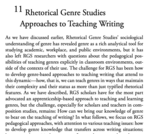
The book in its whole provides a thorough and accessible approach to understanding genre and its application in classrooms. Chapter 11 explains applications to teaching.
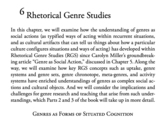
The book in its whole provides a thorough and accessible approach to understanding genre and its application in classrooms. Chapter 6 focuses on the rhetorical understanding of genre.

This website provides an overview of principles of effective vocabulary instruction as well as ideas for vocabulary study geared specifically towards supporting English language learners.

This book includes a comprehensive look at sociolinguistic aspects of the English language, such as historical, cultural, and environmental influences.

Facilitating student-to-student discussion provides students an opportunity to deliberate essential questions facing their community. This is an authentic practice to build and practice content knowledge, civic skills, and dispositions.

In this Cult of Pedagogy podcast, Kristy Louden offers some practical suggestions for teachers to use as they give feedback to student writing throughout the writing process. The goal in delaying the grade is to help students apply feedback rather than see it as a final assessment of their work.
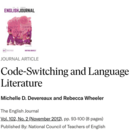
The author presents detailed lessons for engaging students in contrastive analysis and exploring code-switching in words by Zora Neale Hurston, Lorraine Hansberry, Harper Lee, and others.
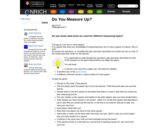
This game for two or more players tests students' knowledge of the uses of various measuring tools. An interactive spinner picturing 8 tools that measure the attributes of length, weight, volume, angle and time determines the players' movement on a game board. Students must explain their reasoning about their choices of tool applications. A printable page is available.